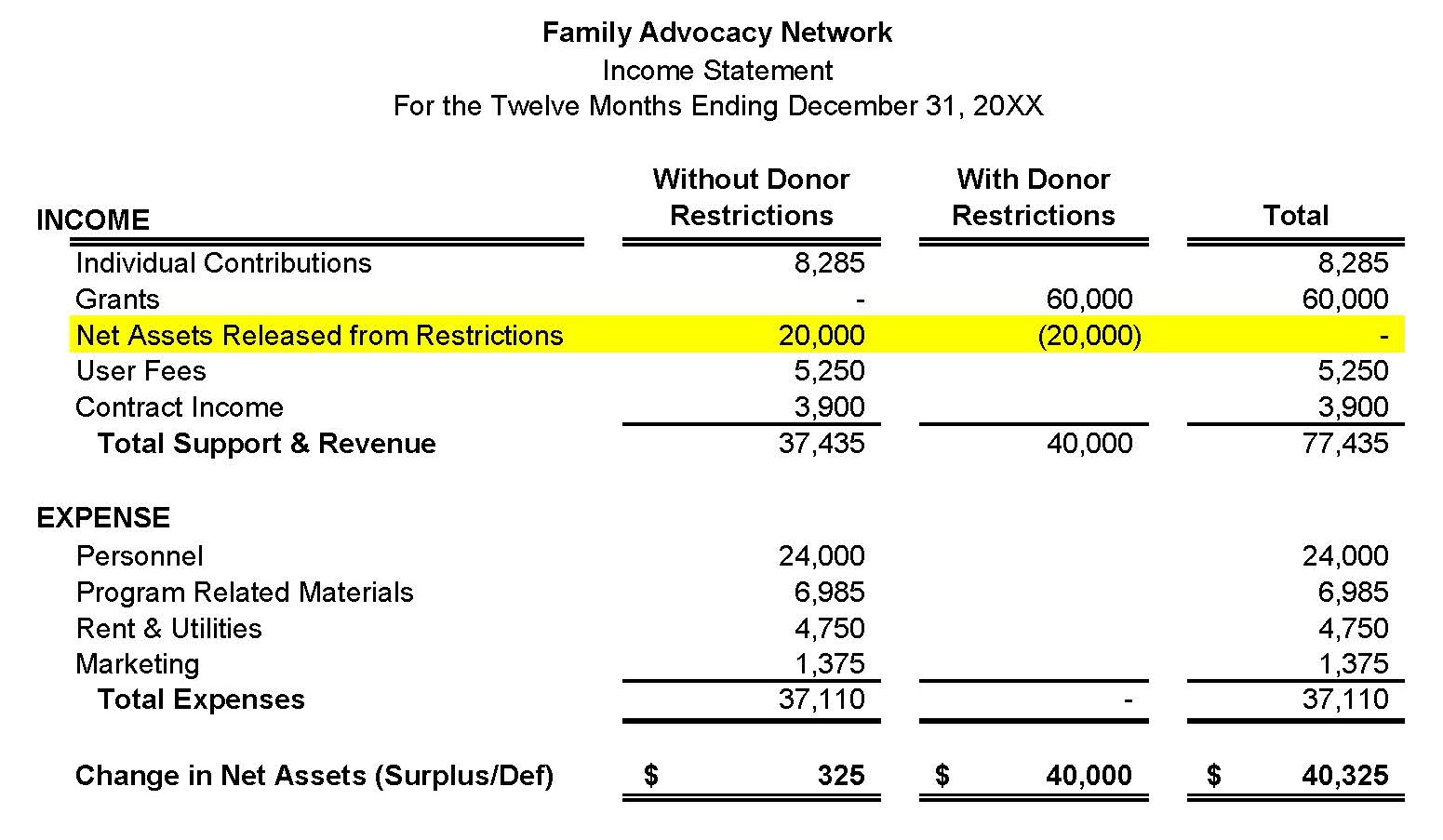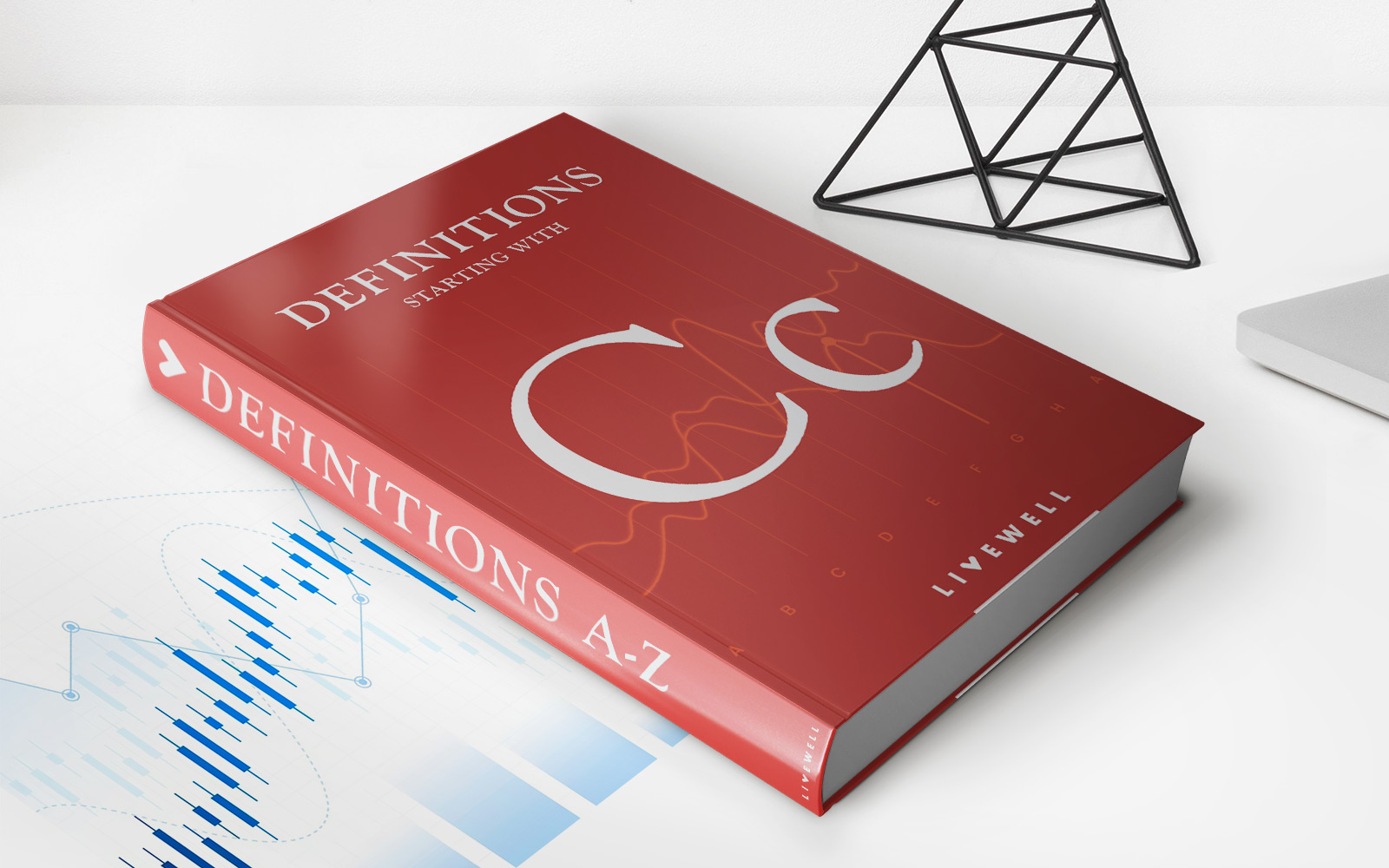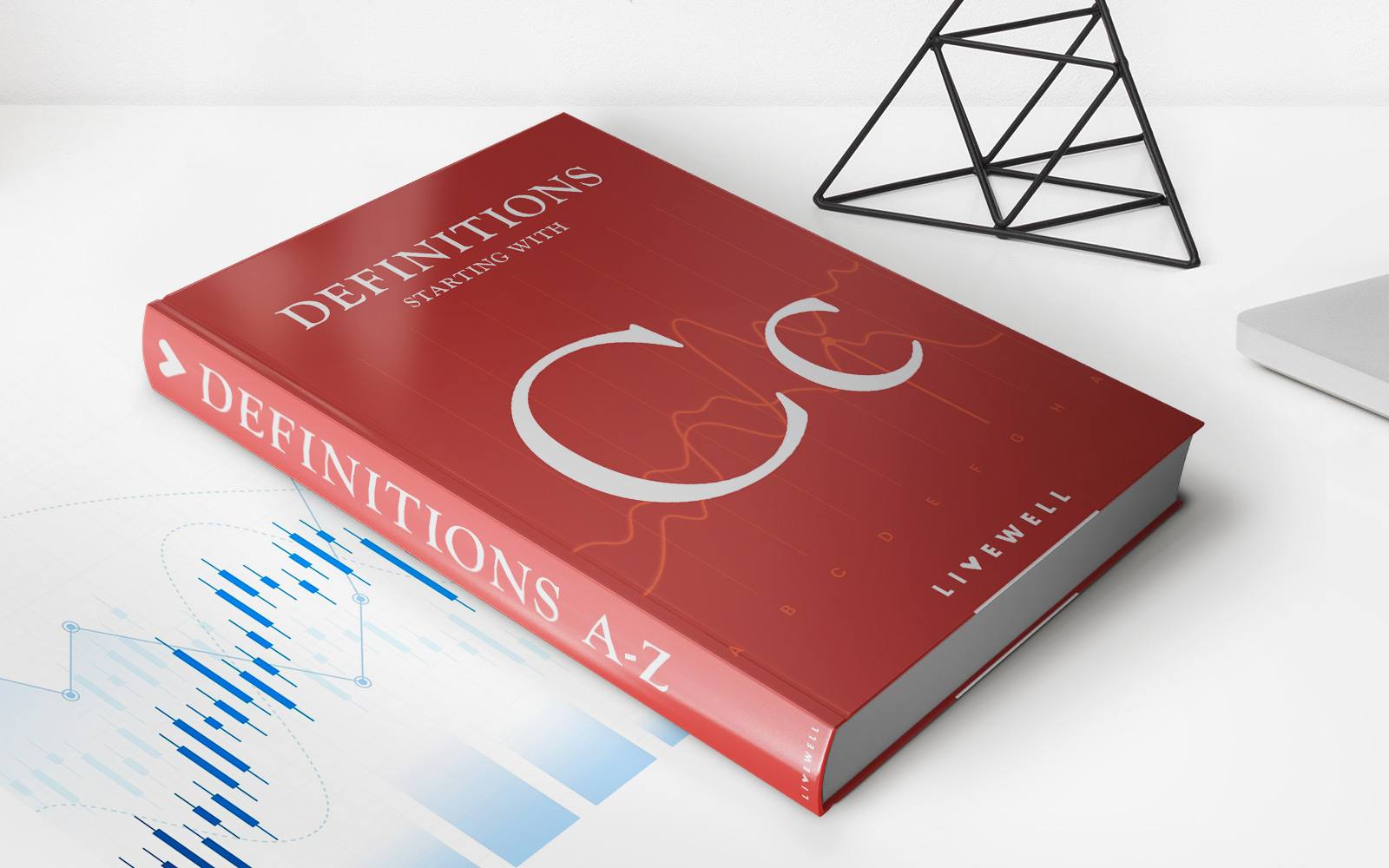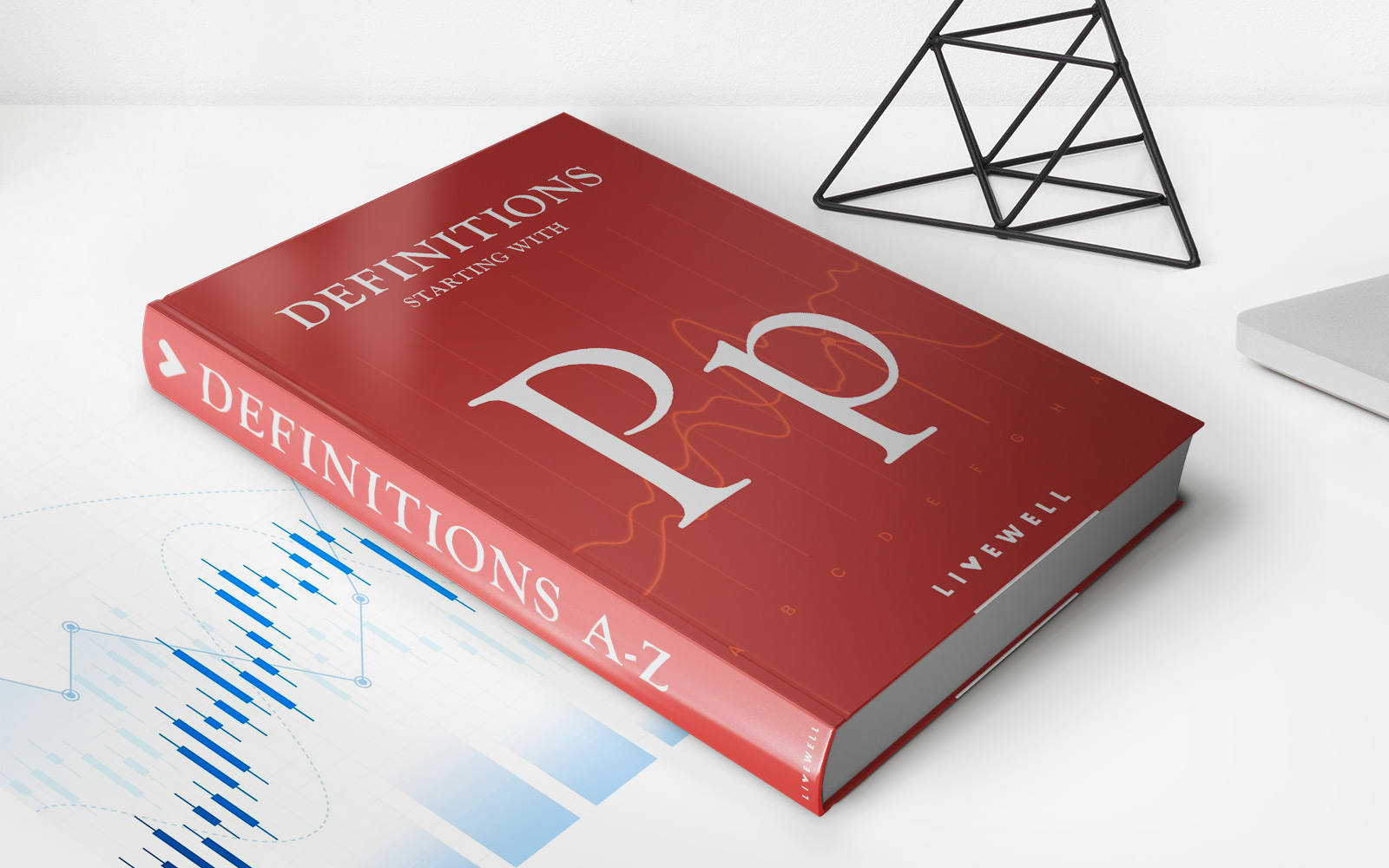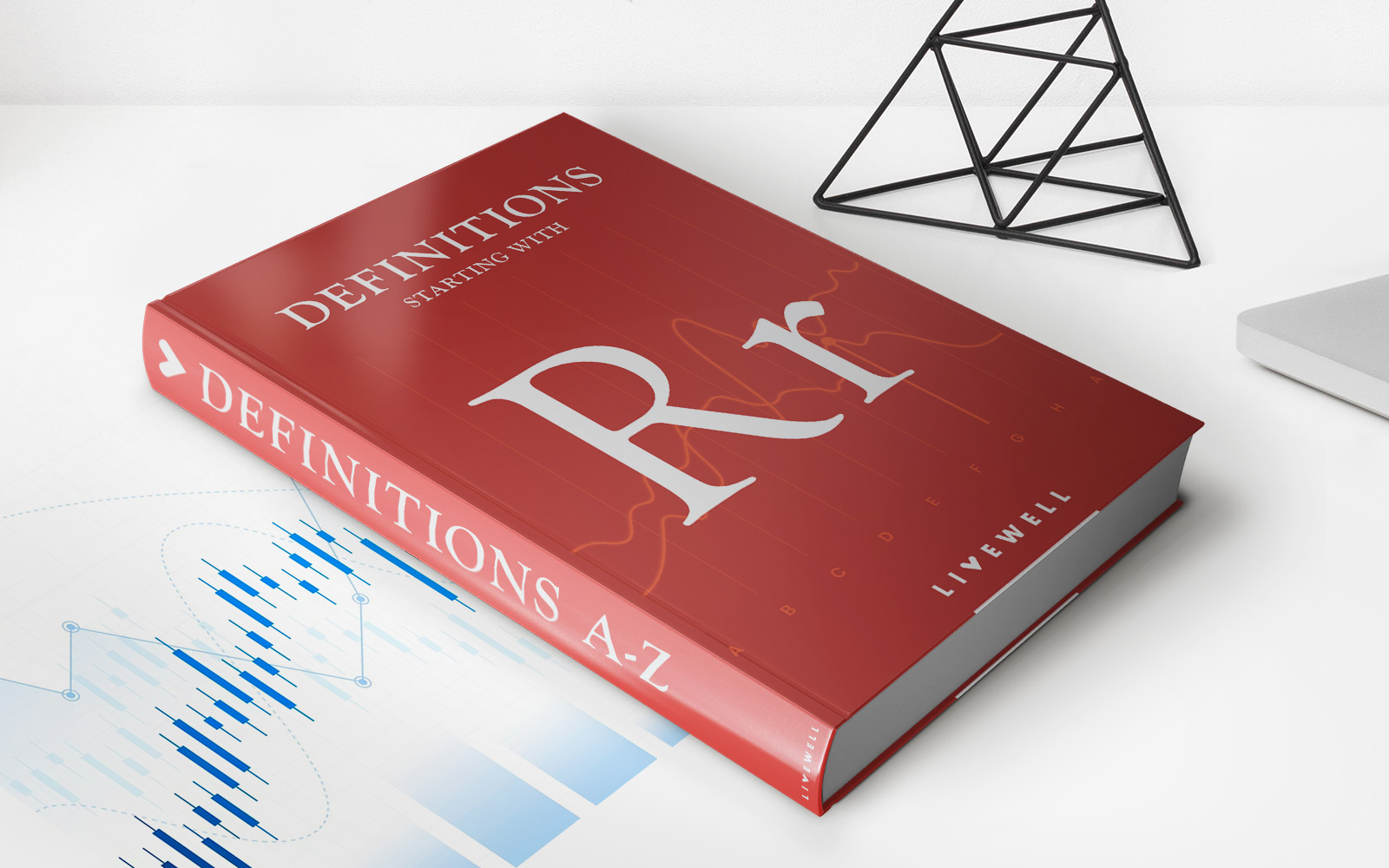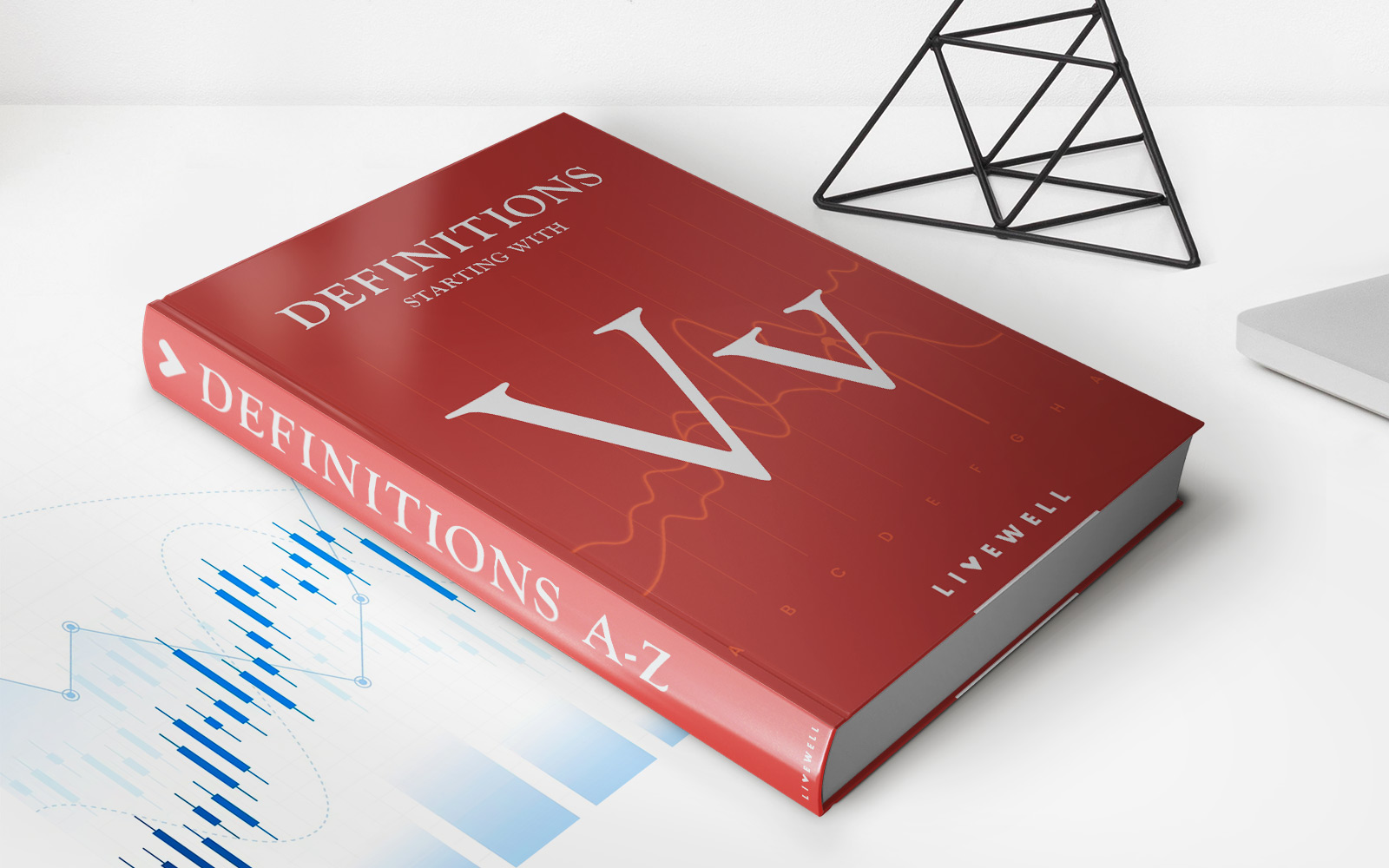

Finance
What Is Cash Balance Pension Plan
Published: November 27, 2023
Learn about the finance aspect of cash balance pension plans and how they can help you save for retirement. Find out how these plans work and their benefits.
(Many of the links in this article redirect to a specific reviewed product. Your purchase of these products through affiliate links helps to generate commission for LiveWell, at no extra cost. Learn more)
Table of Contents
- Introduction
- Definition of Cash Balance Pension Plan
- How Cash Balance Pension Plans Work
- Features and Benefits of Cash Balance Pension Plans
- Key Differences between Cash Balance Pension Plans and Traditional Defined Benefit Plans
- Contribution Limits and Tax Considerations for Cash Balance Pension Plans
- Advantages and Disadvantages of Cash Balance Pension Plans
- Top Industries and Companies that Utilize Cash Balance Pension Plans
- Case Study: Example of a Cash Balance Pension Plan
- Frequently Asked Questions (FAQs) about Cash Balance Pension Plans
- Conclusion
Introduction
When it comes to planning for retirement, there are various options available to individuals and companies. One such option is a cash balance pension plan, which offers a unique and flexible approach to retirement savings. In this article, we will explore what a cash balance pension plan is and how it differs from other retirement plans.
A cash balance pension plan is a type of retirement plan that falls under the category of defined benefit plans. Unlike defined contribution plans, such as 401(k)s or IRAs, where the retirement benefit is based on the contributions made and the investment performance, cash balance pension plans guarantee a specific benefit amount that is determined by a formula.
The concept of a cash balance pension plan is relatively new, with the first plans being introduced in the 1980s. Since then, they have gained popularity among both large corporations and small businesses looking for a retirement plan that provides a guaranteed benefit for employees.
Essentially, a cash balance pension plan combines features of both defined benefit plans and defined contribution plans. It provides participants with a guaranteed benefit at retirement, similar to a traditional pension plan, but the benefit is expressed as an account balance, similar to a 401(k) plan.
This unique structure allows employees to track the growth of their retirement savings over time, making it easier for them to understand and plan for their future financial needs. Additionally, cash balance pension plans offer certain advantages and benefits that make them an attractive option for both employers and employees.
Over the years, cash balance pension plans have gained popularity in a wide range of industries, including finance, healthcare, technology, and professional services. Many Fortune 500 companies and small businesses alike have adopted these plans to provide their employees with a secure and reliable retirement savings option.
In the following sections, we will delve deeper into the specifics of cash balance pension plans, including how they work, their features and benefits, as well as any potential drawbacks to consider. We will also explore some real-world examples and answer frequently asked questions about cash balance pension plans.
Definition of Cash Balance Pension Plan
A cash balance pension plan is a type of retirement plan that combines elements of both defined benefit plans and defined contribution plans. In a cash balance pension plan, an employer contributes a specific percentage or a fixed amount of an employee’s salary, along with an interest credit, to the employee’s individual account. This account grows over time, much like a traditional defined contribution plan such as a 401(k) plan.
Unlike a traditional pension plan, where the retirement benefit is based on the employee’s years of service and final average salary, a cash balance pension plan provides participants with a hypothetical account balance instead of a promised monthly income. This hypothetical account balance grows based on a predefined interest rate or investment performance, as set forth in the plan’s terms.
When an employee reaches retirement age, they have the option to take their accumulated account balance as a lump sum payment or convert it into an annuity, which will provide them with a stream of income for the rest of their life. The amount of the annuity will be based on the hypothetical account balance and the annuity factors specified in the plan.
It’s important to note that while cash balance pension plans offer a degree of flexibility and portability compared to traditional pension plans, they are still subject to specific regulations and tax considerations. These plans must comply with the Employee Retirement Income Security Act (ERISA) guidelines and may require actuarial calculations to determine the crediting rate and benefits.
In summary, a cash balance pension plan is a retirement savings vehicle that provides a hypothetical account balance that grows over time based on contributions, interest credits, and investment performance. This unique structure blends the characteristics of defined benefit and defined contribution plans, offering both the security of a guaranteed benefit and the flexibility of an individual account balance.
How Cash Balance Pension Plans Work
Cash balance pension plans operate on a simple premise: employers make contributions to an employee’s individual account, which grows over time based on a predefined interest credit or investment performance. Let’s take a closer look at the key components and mechanics of how cash balance pension plans work.
Employer Contributions: Employers contribute a specific percentage or a fixed amount of an employee’s compensation to their cash balance pension plan account. This contribution can be funded entirely by the employer, or there may be an option for employees to make voluntary contributions as well.
Interest Credits: In addition to the employer contributions, cash balance pension plans provide participants with interest credits. The interest credit rate is predetermined by the plan’s terms and can be a fixed rate or based on a specific index, such as the average rate of return on long-term corporate bonds.
Account Growth: Over time, the combination of employer contributions and interest credits causes the account balance to grow. The account balance is typically expressed as a hypothetical amount and is not directly tied to the actual investments made by the plan. Instead, it represents the participant’s share of the plan’s overall assets.
Plan Vesting: Cash balance pension plans may have a vesting schedule that determines when employees become entitled to the employer’s contributions and any associated earnings. Vesting schedules can vary but are typically based on years of service, encouraging employees to stay with the company for a certain period to fully benefit from the employer contributions.
Retirement Options: When employees reach the plan’s retirement age, they have several options for accessing their accumulated cash balance. They can choose to receive a lump sum payment, roll over the funds into an individual retirement account (IRA), or convert the balance into an annuity, which provides a steady stream of income over their lifetime.
Portability: One of the advantages of cash balance pension plans is their portability. If an employee leaves the company before retiring, they can typically roll over their cash balance into another qualified retirement plan or an IRA, allowing them to continue growing their retirement savings in a tax-advantaged manner.
Overall, the mechanics of cash balance pension plans provide employees with a clear understanding of their retirement savings and allow for more transparency compared to traditional defined benefit plans. By combining elements of defined benefit and defined contribution plans, cash balance pension plans offer the security of a guaranteed benefit while providing participants with the flexibility to track their account growth and make informed decisions about their retirement finances.
Features and Benefits of Cash Balance Pension Plans
Cash balance pension plans offer several unique features and benefits that make them an attractive retirement savings option for both employers and employees. Let’s explore some of the key features and benefits of cash balance pension plans:
1. Guaranteed Benefit: One of the main advantages of cash balance pension plans is that they provide participants with a guaranteed benefit at retirement. Unlike defined contribution plans, where the retirement benefit is subject to market fluctuations, cash balance pension plans ensure that employees receive a predetermined amount based on their account balance and plan’s terms.
2. Individual Account Balance: Cash balance pension plans provide participants with an individual account balance that grows over time. This account balance is easily tracked and allows employees to have a clear picture of their retirement savings and the progress they are making towards their financial goals.
3. Portability: Cash balance pension plans offer portability, allowing employees to take their accumulated account balance with them if they change jobs or leave the company before retirement. This portability enables individuals to maintain their retirement savings and continue growing their funds in a tax-advantaged manner.
4. Diversification of Retirement Savings: By offering cash balance pension plans alongside other retirement plans, such as 401(k)s or IRAs, employees have the opportunity to diversify their retirement savings. This diversification can help mitigate risks and provide a well-rounded portfolio of assets for future financial security.
5. Employer Contributions: Employers play a significant role in cash balance pension plans by making contributions to employees’ accounts. These employer contributions help to bolster the growth of the account balance and provide an additional retirement savings source that is separate from employee contributions.
6. Tax Advantages: Cash balance pension plans offer tax advantages similar to other retirement plans. Employer contributions are tax-deductible, and the funds in the account grow tax-deferred until they are withdrawn at retirement. This tax-efficient structure allows employees to maximize their retirement savings potential.
7. Retirement Options: When participants reach retirement age, they have various options for accessing their cash balance, including a lump sum distribution, rollover into an IRA, or conversion into an annuity. These options provide flexibility and allow individuals to choose the method that best aligns with their retirement goals and financial needs.
8. Attract and Retain Talent: Offering a comprehensive retirement savings plan like a cash balance pension plan can help employers attract and retain top talent. These plans are highly valued by employees due to the guaranteed benefit and additional employer contributions, making them a valuable addition to the overall compensation package.
Overall, cash balance pension plans provide a secure and transparent retirement savings vehicle that combines the benefits of defined benefit and defined contribution plans. With features such as a guaranteed benefit, individual account balances, portability, and tax advantages, these plans offer a reliable way for employees to save for retirement and achieve long-term financial security.
Key Differences between Cash Balance Pension Plans and Traditional Defined Benefit Plans
Cash balance pension plans and traditional defined benefit plans share similarities in that they both fall under the umbrella of employer-sponsored retirement plans. However, there are several key differences between these two types of plans. Let’s examine the key differentiating factors:
1. Benefit Structure: In a traditional defined benefit plan, the retirement benefit is typically based on factors such as years of service and final average salary. The benefit is expressed as a monthly income for life. In contrast, cash balance pension plans provide participants with a hypothetical account balance that grows over time, based on employer contributions and interest credits.
2. Employer Contributions: Both types of plans involve employer contributions. However, in a traditional defined benefit plan, the employer assumes the investment risk and is responsible for funding the benefit payments. In cash balance pension plans, employers contribute a specific percentage or fixed amount to each employee’s individual account.
3. Account Ownership: Cash balance pension plans offer participants individual accounts with hypothetical balances, which are separate from the employer’s overall pension fund. Traditional defined benefit plans, on the other hand, do not provide individual accounts, and the retirement benefit is derived from the plan’s overall assets.
4. Account Growth: The growth of the account balance varies between cash balance pension plans and traditional defined benefit plans. In a cash balance pension plan, the account balance grows over time with employer contributions, interest credits, and potential investment gains. In a traditional defined benefit plan, the benefit formula determines the final benefit amount, which is not directly tied to the account balance or investment performance.
5. Retirement Benefit: The retirement benefit structure differs between the two plans. In a traditional defined benefit plan, the benefit is typically paid out as a monthly income for the rest of the participant’s life. In cash balance pension plans, participants have the option to receive the account balance as a lump sum or convert it into an annuity, which provides a stream of income throughout retirement.
6. Portability: Cash balance pension plans generally offer greater portability compared to traditional defined benefit plans. If an employee leaves the company before retirement, they can typically roll over their cash balance into another qualified retirement plan or an IRA. Traditional defined benefit plans often do not offer this level of portability.
7. Employee Risk: Cash balance pension plans place more investment risk on the employee. The growth of the account balance depends on the contributions and interest credits set by the plan, as well as any potential investment gains. In traditional defined benefit plans, the employer bears the investment risk, and participants receive a predetermined benefit regardless of market performance.
8. Actuarial Considerations: Cash balance pension plans often require actuarial calculations to determine the crediting rate, the employer contribution amounts, and the overall plan funding. These calculations help ensure compliance with regulations and provide an understanding of the plan’s financial health. Traditional defined benefit plans also involve actuarial considerations to determine the funding necessary to fulfill benefit obligations.
Understanding the key differences between cash balance pension plans and traditional defined benefit plans is essential for both employers and employees. These differences impact the retirement benefit structure, account ownership, risk allocation, portability, and other aspects that shape the overall retirement plan experience.
Contribution Limits and Tax Considerations for Cash Balance Pension Plans
Cash balance pension plans offer certain contribution limits and tax considerations that both employers and participants should be aware of. Understanding these limits and tax implications is crucial for effectively managing and optimizing contributions to these retirement plans. Let’s explore the contribution limits and tax considerations for cash balance pension plans:
1. Contribution Limits: Cash balance pension plans have specific contribution limits that determine the maximum amount that can be contributed to the plan each year. These limits are subject to annual changes and are set by the Internal Revenue Service (IRS). For 2021, the contribution limit for cash balance pension plans is $230,000 or 100% of the participant’s compensation, whichever is lower.
2. Age-Related Contribution Increases: Cash balance pension plans also allow for age-related contribution increases, known as catch-up contributions. Participants who are 50 years old or older can make additional catch-up contributions that exceed the regular contribution limits, up to a specified threshold. The catch-up contribution amount for 2021 is $6,500.
3. Employer Contribution Requirements: Cash balance pension plans require employers to make regular contributions to employees’ accounts. The contribution requirements are typically defined in the plan’s terms and are usually expressed as a percentage of the participant’s compensation or a fixed dollar amount. Employers must ensure that they meet the required contribution amounts to maintain the plan’s compliance.
4. Tax Deductibility of Contributions: Employer contributions to cash balance pension plans are generally tax-deductible for the company. These contributions are considered part of the company’s employee benefit expenses and can be subtracted from taxable income. Participants, however, do not receive immediate tax benefits for employer contributions made on their behalf.
5. Tax Deferral on Investment Gains: Cash balance pension plans offer participants tax-deferred growth on investment gains within the account. The funds within the account accumulate and grow without incurring immediate taxes. Taxes on the account balance and investment earnings are deferred until funds are withdrawn, typically during retirement.
6. Mandatory Minimum Distributions: Like other tax-advantaged retirement plans, cash balance pension plans require participants to begin taking mandatory minimum distributions (RMDs) once they reach a certain age. Participants must start receiving distributions by April 1 following the year in which they turn 72, or they may face penalties for failing to meet the RMD requirements.
7. Tax Implications on Distributions: When participants receive distributions from their cash balance pension plans, the funds are subject to income tax. Distributions are generally taxed at the participant’s ordinary income tax rates for the year in which they are received.
8. Plan Termination Tax Considerations: If a cash balance pension plan is terminated, participants may have certain tax considerations. For example, if the plan is underfunded at the time of termination, participants may be eligible for a Pension Benefit Guaranty Corporation (PBGC) guarantee. However, any distributions received from an underfunded plan may be subject to additional taxes.
It is important for employers and participants to consult with qualified tax professionals or financial advisors to understand the specific contribution limits and tax implications for their cash balance pension plans. By adhering to these limits and considering the tax implications, stakeholders can make informed decisions to maximize the benefits and tax advantages offered by cash balance pension plans.
Advantages and Disadvantages of Cash Balance Pension Plans
Cash balance pension plans offer a number of advantages that make them an appealing retirement savings option, but they also come with certain disadvantages to consider. Understanding these advantages and disadvantages is crucial for both employers and employees when evaluating the suitability of cash balance pension plans. Let’s explore some of the key advantages and disadvantages:
Advantages:
1. Guaranteed Benefit: Cash balance pension plans provide participants with a guaranteed benefit at retirement. This offers financial security and peace of mind, knowing that there is a predetermined amount of retirement income available based on the hypothetical account balance.
2. Individual Account Balance: Participants have individual account balances, allowing for transparency and easy tracking of their retirement savings. This can help employees better understand the growth of their savings and make informed decisions about their retirement planning.
3. Portability: Cash balance pension plans are typically portable, allowing participants to roll over their account balance when changing jobs or leaving the company before retirement. This offers flexibility and continuity of retirement savings, regardless of career transitions.
4. Retirement Options: Participants have flexibility in accessing their cash balance at retirement. They can choose to receive a lump sum payment, roll over funds into an IRA, or convert the balance into an annuity, tailoring their retirement strategy to their specific needs and preferences.
5. Tax Advantages: Cash balance pension plans offer tax advantages similar to other retirement plans. Employer contributions are tax-deductible, and the funds in the account grow tax-deferred until withdrawal. This tax efficiency assists in maximizing retirement savings potential.
Disadvantages:
1. Complex Plan Design: Cash balance pension plans can be more complex to administer compared to other retirement plans due to their hybrid nature. They often require actuarial calculations, ongoing monitoring, and compliance with regulatory requirements, which may come with additional administrative costs.
2. Limited Investment Choice: Cash balance pension plans typically offer a limited selection of investment options compared to other retirement plans, such as 401(k)s. This lack of investment choice may restrict participants from diversifying their portfolio based on individual preferences or investment strategies.
3. Potential Volatility: Market fluctuations and investment performance can impact the growth of the account balance, especially if participants have chosen investment options tied to the market. This introduces a level of volatility and uncertainty compared to traditional defined benefit plans, where the employer assumes the investment risk.
4. Restricted Contribution Flexibility: Cash balance pension plans have specific contribution limits, which may be lower compared to other retirement plans, such as 401(k)s. This can limit the flexibility for employees who want to contribute higher amounts towards their retirement savings.
5. Actuarial Assumptions: The calculation of benefits in cash balance pension plans relies heavily on actuarial assumptions, such as interest credits and life expectancy. These assumptions, while necessary, may not accurately reflect individual circumstances and can impact the ultimate benefit amount received at retirement.
Overall, cash balance pension plans provide a unique retirement savings vehicle that combines elements of defined benefit and defined contribution plans. While they offer advantages such as a guaranteed benefit, individual account balances, portability, and tax advantages, they also come with considerations around plan complexity, limited investment choices, potential volatility, contribution limits, and the reliance on actuarial assumptions. Employers and employees should carefully weigh these factors to determine if a cash balance pension plan aligns with their retirement goals and financial needs.
Top Industries and Companies that Utilize Cash Balance Pension Plans
Cash balance pension plans have gained popularity across various industries as a means of providing employees with a secure and flexible retirement savings option. While cash balance pension plans are utilized by a wide range of companies, certain industries have embraced these plans more prominently. Let’s explore some of the top industries and companies that utilize cash balance pension plans:
Finance and Banking:
The finance and banking industry is one of the leading sectors that utilize cash balance pension plans. Large financial institutions, such as JPMorgan Chase, Bank of America, and Wells Fargo, have implemented these plans to attract and retain top talent in a highly competitive industry. Cash balance pension plans provide these companies with a way to offer employees a valuable retirement benefit that aligns with their financial expertise.
Healthcare and Pharmaceuticals:
Healthcare organizations and pharmaceutical companies often adopt cash balance pension plans to provide their employees with long-term financial security. Companies like Johnson & Johnson and Pfizer have adopted cash balance plans as a way to attract and retain top healthcare professionals and researchers. The stable and predictable retirement benefit offered by these plans is particularly appealing to employees in a field where expertise and dedication are highly valued.
Technology and Hi-Tech Startups:
Technology companies, especially startups, have increasingly turned to cash balance pension plans to attract top talent and provide employees with an attractive retirement savings option. Some notable technology companies that offer cash balance plans include Google, Amazon, and Microsoft. These plans align with the innovative and forward-thinking culture of the tech industry, allowing employees to track the growth of their retirement savings while benefiting from a guaranteed retirement benefit.
Professional Services and Law Firms:
Professional services firms, including accounting, consulting, and law firms, have adopted cash balance pension plans to reward and retain highly skilled employees. Companies such as PricewaterhouseCoopers (PwC), Ernst & Young (EY), and prestigious law firms like Latham & Watkins and Skadden Arps offer cash balance plans to their employees. These plans provide professionals in these industries with a stable retirement benefit that acknowledges their expertise and promotes long-term loyalty.
Manufacturing and Industrial Companies:
Manufacturing and industrial companies, including automotive manufacturers, aerospace companies, and industrial conglomerates, have also implemented cash balance pension plans. General Electric (GE), Ford, and Boeing are among the notable companies that offer these plans to their employees. Cash balance plans provide these organizations with a way to provide a secure and reliable retirement benefit, while offering employees the opportunity to track the growth of their retirement savings over time.
It is important to note that while these industries and companies are notable examples of those that utilize cash balance pension plans, cash balance plans are not exclusive to these sectors. Cash balance pension plans have gained popularity across a wide range of industries, and many companies, from large corporations to small businesses, have adopted these plans as part of their retirement benefits package.
Case Study: Example of a Cash Balance Pension Plan
To provide a practical example of how a cash balance pension plan works, let’s examine the case of XYZ Corporation, a large manufacturing company.
XYZ Corporation offers a cash balance pension plan to its employees as part of their comprehensive retirement benefits package. The plan is designed to provide employees with a guaranteed retirement benefit while allowing them to track the growth of their account balance over time.
In this plan, XYZ Corporation contributes 5% of each employee’s annual compensation to their individual cash balance account. For instance, if an employee earns $60,000 per year, they would receive a $3,000 annual contribution to their account.
The contributions made by XYZ Corporation to the employee’s account are subject to an annual interest credit, which is set at 4%. This means that the account balance grows by 4% each year based on the previous year’s balance plus the employer contribution. Additionally, the accumulated balance also benefits from potential investment gains.
Let’s consider an example of a hypothetical employee, Sarah, who has been with XYZ Corporation for 10 years. Assume that her initial cash balance account balance was $0. Over the years, based on the employer contributions and interest credits, her account balance would have grown as follows:
- Year 1: $3,000 (5% of $60,000)
- Year 2: $6,120 ($3,000 + 4% interest credit)
- Year 3: $9,361.20 ($6,120 + 4% interest credit)
- Year 4: $12,729.69 ($9,361.20 + 4% interest credit)
- Year 5: $16,236.96 ($12,729.69 + 4% interest credit)
- Year 6: $19,895.24 ($16,236.96 + 4% interest credit)
- Year 7: $23,717.23 ($19,895.24 + 4% interest credit)
- Year 8: $27,716.47 ($23,717.23 + 4% interest credit)
- Year 9: $31,907.14 ($27,716.47 + 4% interest credit)
- Year 10: $36,303.19 ($31,907.14 + 4% interest credit)
When Sarah reaches the retirement age specified by the plan, she has several options for accessing her cash balance. She can choose to receive the accumulated account balance as a lump sum payment, roll over the funds into an IRA, or convert the balance into an annuity to provide a stream of retirement income.
This case study demonstrates how a cash balance pension plan operates. Participants like Sarah benefit from the annual employer contributions, compounded by the interest credits and potential investment gains. They have the flexibility to track the growth of their retirement savings and choose the most suitable distribution option at retirement.
Note that the numbers provided in this example are for illustrative purposes only and do not reflect actual plan terms or performance. Cash balance pension plans can have varying contribution percentages, interest credit rates, and retirement age requirements based on the specific plan design and employer’s preferences.
Frequently Asked Questions (FAQs) about Cash Balance Pension Plans
Here are some frequently asked questions about cash balance pension plans:
1. Are cash balance pension plans the same as 401(k) plans?
No, cash balance pension plans are not the same as 401(k) plans. While both are retirement savings vehicles, cash balance plans are considered hybrid plans that combine features of both defined benefit and defined contribution plans. Cash balance plans guarantee a specific benefit at retirement, while 401(k) plans are based on individual contributions and investment performance.
2. Can employees contribute to cash balance pension plans?
Typically, employees cannot make voluntary contributions to cash balance pension plans. The contributions to these plans are made by the employer based on a specific percentage or fixed amount of the employee’s compensation.
3. Are cash balance pension plans portable?
Yes, cash balance pension plans are generally portable. If an employee leaves a company before retirement, they can roll over their cash balance into another qualified retirement plan, such as an IRA or a new employer’s retirement plan, without incurring taxes or penalties.
4. How are cash balance pension plan benefits calculated?
The benefits in a cash balance pension plan are calculated based on the participant’s account balance, which grows over time with employer contributions, interest credits, and potential investment gains. Upon retirement, participants can typically choose to receive their account balance as a lump sum payment, convert it into an annuity, or roll it over into an IRA.
5. Are cash balance pension plans subject to contribution limits?
Yes, cash balance pension plans have contribution limits. These limits are set by the IRS each year and are based on a percentage of the participant’s compensation or a fixed dollar amount. The actual contribution limit depends on the participant’s age and the plan’s terms.
6. Do cash balance pension plans require actuarial calculations?
Yes, cash balance pension plans often require actuarial calculations to determine the crediting rate, employer contribution amounts, and overall plan funding. Actuarial calculations help ensure compliance with regulatory requirements and determine the plan’s financial health.
7. Can participants receive their cash balance pension plan benefits before retirement?
In general, cash balance pension plans are designed as retirement savings vehicles. Participants can typically access their benefits upon reaching the plan’s specified retirement age, which is usually determined by the terms of the plan. However, some plans may allow for earlier distributions in certain circumstances, such as disability or financial hardship. It is important to review the specific plan terms for eligibility requirements.
8. Are cash balance pension plans insured by the government?
Cash balance pension plans are not insured by the government like some other retirement plans. However, certain protections may be in place through the Pension Benefit Guaranty Corporation (PBGC). If a cash balance pension plan is terminated and underfunded, the PBGC may provide a limited amount of guaranteed coverage for participants.
It’s important to note that the answers provided here are general and should not replace consulting with a tax advisor or retirement plan specialist. Cash balance pension plans can vary depending on the specific plan design and employer’s preferences, so participants and employers should review the plan documents for accurate and up-to-date information.
Conclusion
In conclusion, cash balance pension plans offer a unique and flexible approach to retirement savings. These plans combine elements from both defined benefit and defined contribution plans, providing participants with a guaranteed retirement benefit while allowing them to track the growth of their individual account balance over time.
Cash balance pension plans have several advantages that make them an appealing option for employers and employees. These advantages include the security of a guaranteed benefit, transparency through individual account balances, portability for career transitions, flexibility in retirement options, and tax advantages such as tax-deductible employer contributions and tax-deferred growth.
However, it is important to consider the potential disadvantages as well. Cash balance pension plans can be more administratively complex, offer limited investment choices compared to other retirement plans, be subject to market volatility, have restricted contribution flexibility, and rely on actuarial assumptions for benefit calculations.
Various industries, including finance, healthcare, technology, professional services, and manufacturing, have embraced cash balance pension plans as part of their retirement benefits package to attract and retain top talent. These plans provide employees with a reliable and valuable retirement savings vehicle that aligns with their long-term financial goals.
As with any retirement plan, it is crucial for employers and employees to carefully evaluate the specific details of the cash balance pension plan offered, including contribution limits, investment options, vesting schedules, and distribution options. Consulting with financial advisors or retirement plan specialists can provide valuable guidance in making informed decisions about cash balance pension plans.
In summary, cash balance pension plans provide a balanced approach to retirement savings, offering the security of a guaranteed benefit with the flexibility of individual account balances. By understanding the features, benefits, and limitations of these plans, employers and employees can make informed decisions to build a solid foundation for retirement and secure their financial future.



